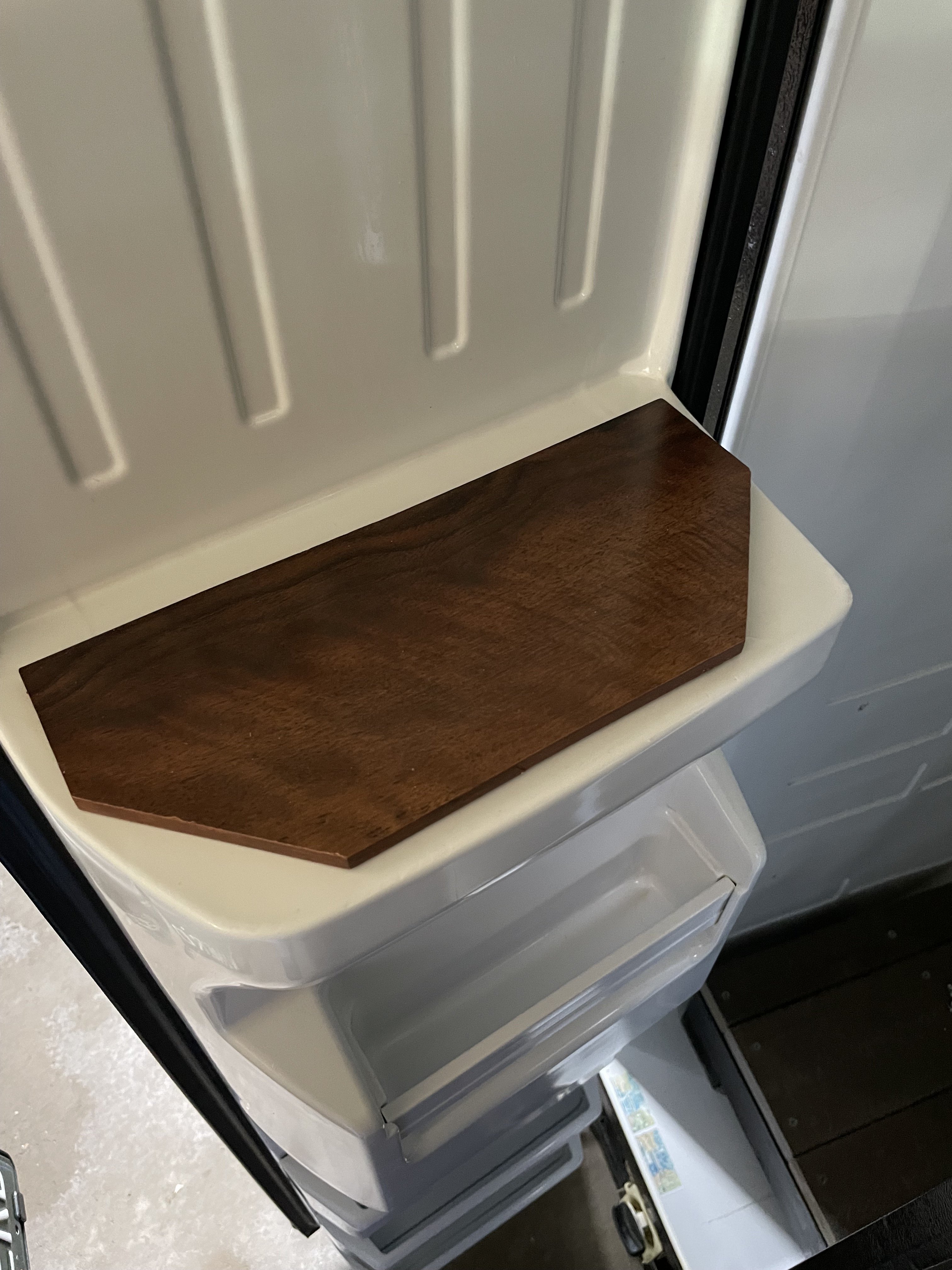I was previously using a wine fridge which I converted to a fermentation chamber for my brew bucket (controlled by a BrewPi). Worked great until I added a Spike CF5 conical which needed a bigger fermenting space.
My main inspiration came from Boerderij_Kabouter and this build: Side-by-Side to Fermentation Chamber Build
I decided I didn't need extra freezer space and I also already have a keezer so having one big chamber made the most sense to me.
Purchased this one for $100 from a friend who also delivered it.


After a major cleaning and gutting of almost everything inside, I cut out the ice/water dispenser. It was dirty and crusty and no need for it.

Sealed up the front with a piece of sheet metal, shot a can of spray seal in the hole and covered the inside with a floor board I had laying around.



Time to cut the interior wall out! Used a multitool which worked very well. Mostly thin plastic and insulation, couple wire and compartments (venting) here and there.



Built a sturdy floor for the conical to sit on


Now for the wiring. I simply removed the fridge thermostat and then cut and attached the 2 wires to a (SSR) solid state relay (which attached to my BrewPi controller).


First test yesterday to see if it works. All good, YESSSS! Lights, fan, cooling!

Very roomy for one, could probably fit 2 in there...


Still need to add the heat source and put a few things back in place but think it's going to work well.
I'll steal my light socket with reptile bulb for heat. It's only 40w and works great for my little wine fridge but might need 100w bulb for this beast.
I'm also trying to figure out how disable the auto defrost board as I'm never going to go below 32ºF. My understand is that if I don't disable the auto defrost, it may not allow cooling at times when the BrewPi calls for it.
If anyone knows more about this or if you know anything about bypassing this board, please let me know.
Here's a pic of the defrost board. Unfortunately, the only thing I know about this fridge is that it's a "Whirlpool Conquest". There are no stickers or wiring diagrams inside, outside or underneath.

Thanks for looking!!
Cheers.
My main inspiration came from Boerderij_Kabouter and this build: Side-by-Side to Fermentation Chamber Build
I decided I didn't need extra freezer space and I also already have a keezer so having one big chamber made the most sense to me.
Purchased this one for $100 from a friend who also delivered it.


After a major cleaning and gutting of almost everything inside, I cut out the ice/water dispenser. It was dirty and crusty and no need for it.

Sealed up the front with a piece of sheet metal, shot a can of spray seal in the hole and covered the inside with a floor board I had laying around.



Time to cut the interior wall out! Used a multitool which worked very well. Mostly thin plastic and insulation, couple wire and compartments (venting) here and there.



Built a sturdy floor for the conical to sit on


Now for the wiring. I simply removed the fridge thermostat and then cut and attached the 2 wires to a (SSR) solid state relay (which attached to my BrewPi controller).


First test yesterday to see if it works. All good, YESSSS! Lights, fan, cooling!

Very roomy for one, could probably fit 2 in there...


Still need to add the heat source and put a few things back in place but think it's going to work well.
I'll steal my light socket with reptile bulb for heat. It's only 40w and works great for my little wine fridge but might need 100w bulb for this beast.
I'm also trying to figure out how disable the auto defrost board as I'm never going to go below 32ºF. My understand is that if I don't disable the auto defrost, it may not allow cooling at times when the BrewPi calls for it.
If anyone knows more about this or if you know anything about bypassing this board, please let me know.
Here's a pic of the defrost board. Unfortunately, the only thing I know about this fridge is that it's a "Whirlpool Conquest". There are no stickers or wiring diagrams inside, outside or underneath.

Thanks for looking!!
Cheers.
Attachments
Last edited:









































![Craft A Brew - Safale S-04 Dry Yeast - Fermentis - English Ale Dry Yeast - For English and American Ales and Hard Apple Ciders - Ingredients for Home Brewing - Beer Making Supplies - [1 Pack]](https://m.media-amazon.com/images/I/41fVGNh6JfL._SL500_.jpg)




























